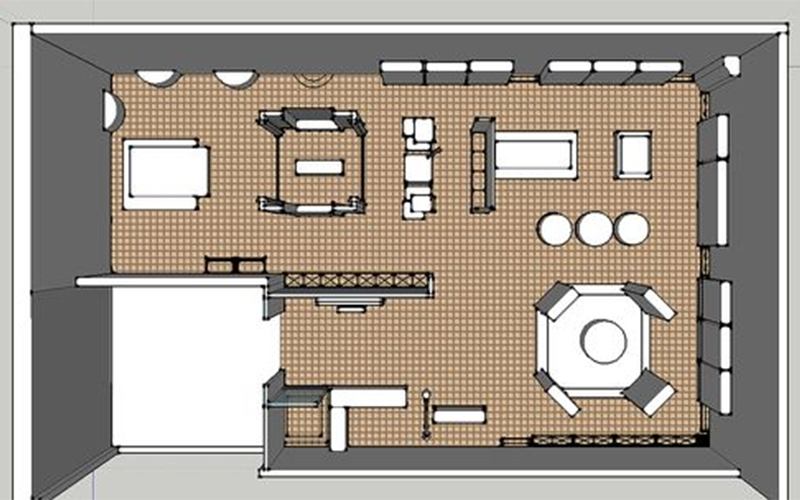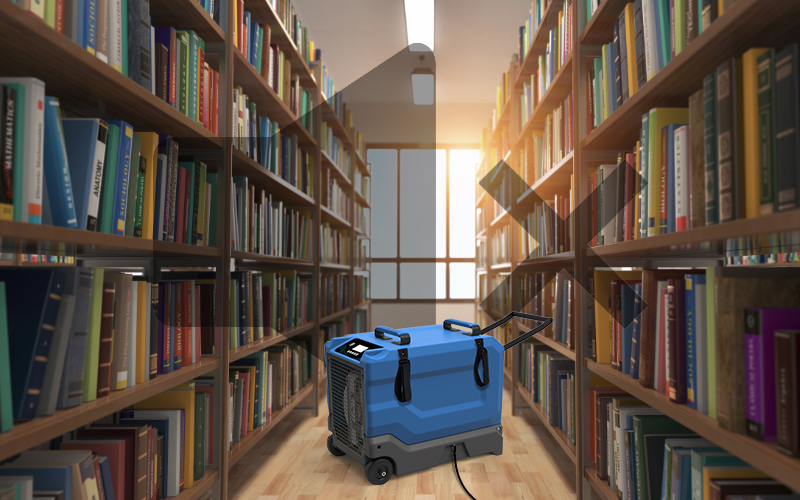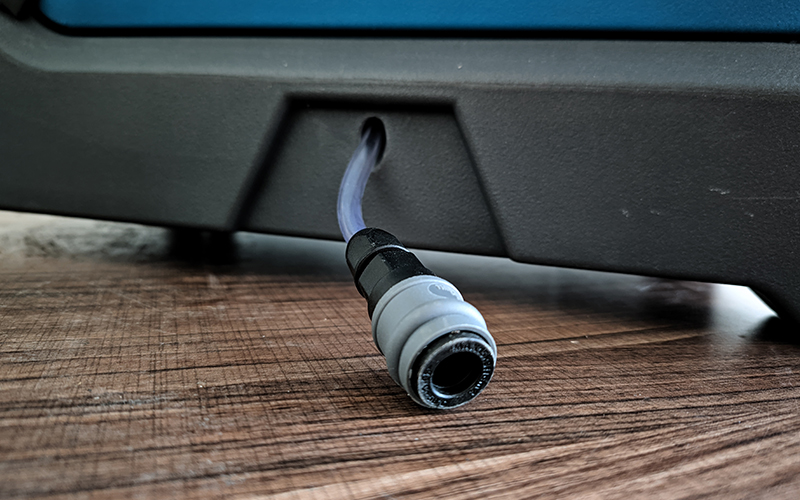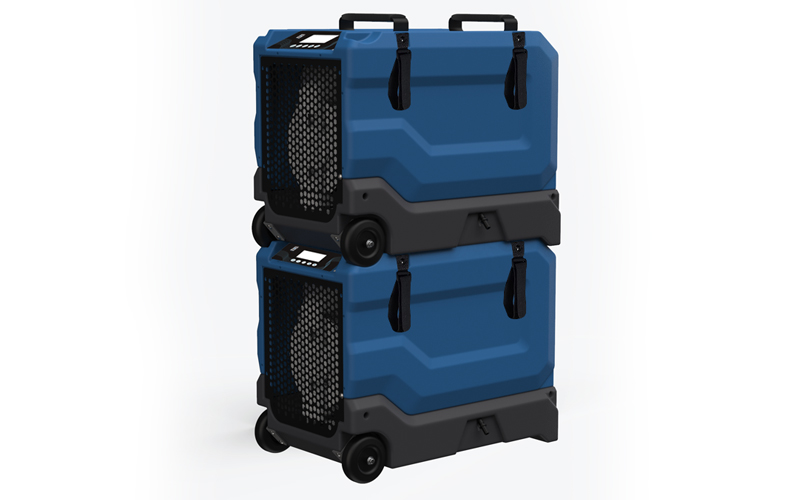With the development of the economy and the improvement of people’s life quality, more and more consumers begin to use dehumidifiers. The penetration rate of dehumidifiers in the international market is also increasing. There are many kinds of dehumidifiers on the market. How to choose the one that is most suitable for you? How to judge dehumidification capacity, power, drainage mode, control mode, etc? This dehumidifier shopping guide will answer all your doubts and help you choose the most suitable machine!
Like other household appliances, dehumidifiers have many parameters. If you do not understand these parameters, you will be at a loss when buying. The customer doesn’t know which one to buy, so he can only follow the simple introduction of the salesperson and will regret it in the end. In fact, there seem to be many parameters of dehumidifiers, and we can buy products that are suitable for us as long as we know a few key points.

Dehumidification capacity of the dehumidifier
The dehumidification capacity is an important index to measure a dehumidifier, which is generally expressed in L/D (liter/day). For example, the dehumidification capacity of a dehumidifier is 21L/D, which means that the dehumidification capacity is 21L/D on the premise that the temperature is 30℃ and the relative humidity is 80%. Users can select the machine with the corresponding dehumidification capacity according to the space and area.
At present, there are some false labels marked on the dehumidifier machines in the market, mainly because enterprises have not marked the real dehumidification capacity according to the machine’s actual dehumidification performance. Some irresponsible manufacturers mislead customers and consumers by false advertising. In the product description of the dehumidifier, they write the dehumidification performance at a high level and attach with a note — 35℃/ 90% RH, which means that the marked dehumidification capacity can only be reached at the condition of 35℃/ 90% RH. In this nonstandard environment, the measured results have no reference value, just for the purpose of falsely marking a high dehumidification volume. Preair sneers at this practice.
Generally, the nominal dehumidification capacity of the dehumidifier is measured under an environment of 27 ℃ and 60% relative humidity. The daily dehumidification capacity is a commonly used marking method in the European dehumidifier market at present, but the measurement environment of daily dehumidification capacity is different from the nominal dehumidification capacity, which is based on the environment with a temperature of 30 ℃ and relative humidity of 80%.
So what should people refer to when buying household dehumidifiers?
In real life, when the room temperature reaches or exceeds 30 ℃, most people will turn on the air conditioner to cool down, and the air conditioner itself can reduce the air humidity, so at this time, people will not think of using a dehumidifier. Therefore, Preair suggests that when purchasing a dehumidifier, first pay attention to the dehumidifier’s nominal dehumidification capacity at 27℃/60% RH, which is closer to the real operating environment.
Dehumidifying space and area
Dehumidification and humidification should be carried out scientifically. The room is too dry or too wet, which is not conducive to human health. This requires that dehumidifier space must be considered when selecting dehumidifiers.
This calculation formula can be used when selecting dehumidifiers with different dehumidification capacities according to the area of buildings with a story height of less than 3m:
Recommended applicable area (maximum single room area) ≤ daily dehumidification capacity (30℃/80% RH) * 2
Brief summary:
1. For a single room with an area of less than 30㎡, a dehumidifier with a daily dehumidification capacity of less than 15L is recommended.
2. For a small family house with an area of 30-80㎡, a dehumidifier with a daily dehumidification capacity of 4-40L is recommended.
3. A dehumidifier with a daily dehumidification capacity of 40-75L is recommended for a large house with an area of 80-150 ㎡.
4. For a larger area of 100-300 ㎡, a commercial dehumidifier with a daily dehumidification capacity of 50-150 L is recommended.
5. In an industrial environment covering an area of 200-2000 ㎡, a professional industrial dehumidifier with a dehumidification capacity of 5-40 L/H is recommended.
PS: When selecting an industrial dehumidifier, it needs to pay attention to the unit of measurement of the dehumidification capacity, which is L/H. The difference should be noticed when selecting.

Noise of the dehumidifier
Usually, people also use household dehumidifiers when they sleep. The sound emitted by the dehumidifier is a very important selection standard, which is generally below 40 decibels. When sleeping, if there is a mosquito buzzing or two people whispering, it will be hard to bear. The use of dehumidifiers with noise below 40 decibels will not affect sleep.
The noise generated by the dehumidifier mainly comes from the work of the fan inside the machine, which is inevitable. But professional dehumidifiers use noise reduction technology. The compressor of the Preair dehumidifier, a core accessory, is purchased from a well-known brand in the industry, which is efficient, soft, and safe. Preair dehumidifiers adopt a liquid spraying cooling device to reduce the motor temperature. With full functional components and protective devices, the humidity remover machine can work safely and reliably with low noise. At present, there are two noise reduction methods for noise reduction dehumidifiers on the market: installing a noise reduction box and a noise reduction air duct. If the dehumidifier for home is too noisy, putting a piece of cloth or cork pad under the dehumidifier will also make a certain noise reduction effect.

Drainage mode of dehumidifier
Some home dehumidifiers are equipped with water tanks. Attention should be paid to the air tightness of the water tank. The moisture odor absorbed by the dehumidifier wheel is locked in the water tank. If the water tank is not tight, the odor will be dispersed into the air. When purchasing, you can put a small piece of paper in the gap of the water tank. If the paper floats, it indicates that the air tightness is not good.
Some commercial dehumidifiers are not equipped with water tanks, but with drainage pipes. After installing the water supply pipe, the water absorbed by the machine can be discharged to the sewage bucket. Or, the valve can be connected to the existing drainage pipe to realize trackless drainage. Before purchasing, you need to consider which drainage method is most convenient for you.

Safety of dehumidifier
When selecting any product, you should consider its safety performance. When the dehumidifier is in use, if the water volume is full and is not found in time, it is very easy to cause potential safety hazards. It is better to select a dehumidifier with an automatic power-off reminder function when water is full. It can timely remind or automatically stop operation when there is too much water. In this way, using the dehumidifier when sleeping at night or not at home during the day can also be more reassuring and safer.
Preair LGR series of dehumidifiers
LGR series of dehumidifiers are typical commercial dehumidifiers made by Preair. There are many good features of LGR dehumidifiers. Relative large dehumidification capacity, high efficiency, energy-saving, various control modes and drainage modes, etc. LGR series of dehumidifiers are also stackable. For example, two LGR85 dehumidifiers stack together and have a better dehumidification performance.
Post time: Dec-21-2022
 +86-13376814803
+86-13376814803  robert@hzhongtai.com
robert@hzhongtai.com 












